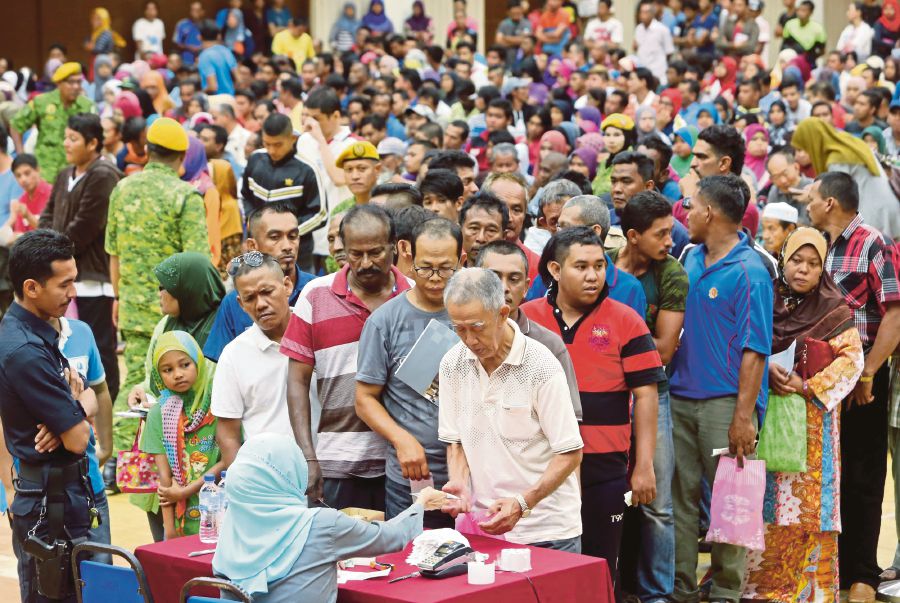MANY weapons have been wielded in the war against poverty. In ancient Rome, the first ever documented social assistance programme, or alimenta in Latin, provided food and subsidised education for orphans and poor children. In modern times, more novel initiatives such as the microfinance movement pioneered by Muhammad Yunus in the 1980s, and the subsequent focus on financial inclusion has benefited billions around the world.
In the past couple of decades, yet another idea emerged as a powerful anti-poverty instrument: cash transfers. A break from years of assistance programmes which focused on in-kind benefit transfers — such as subsidised healthcare and food assistance — cash transfers are a wonderfully simple idea, putting money directly into the hands of those who need it.
Proponents often point out the cost-efficiency of cash programmes. Brookings Institution estimated that cash programmes spend only US$0.10 for every US$1 of benefits delivered, while in-kind benefit programmes spend US$2.13 per US$1 of delivered goods. Not surprising, if you consider that a successful food assistance programme would involve the non-trivial cost of the creation and maintenance of the entire food supply chains.
The simplicity of cash transfers also drastically reduces the number of links in the distribution chain, decreasing potential for local corruption and making programme monitoring easier.
Detractors, however, see cash transfers as bribery, believing that giving cash to the poor will cause them to be lazy, unproductive, or worse — as one Brazilian politician recalled a critic saying: “The first thing the poor will do with the money is to get themselves drunk.”
In 1997 the first-ever conditional cash transfer programme was launched in Mexico, helmed by then-deputy minister and economist Santiago Levy. Dr Levy’s programme offered free cash to the poor on the condition that their children regularly attend school and seek preventive healthcare. He thought that encouraging low-income families to invest in their children’s education and health would help break the intergenerational cycle of poverty. It was a success — and soon, other cash transfer programmes started popping up all over the world, from Latin America to Sub-Saharan Africa.
It was the start of a cash revolution.
Two decades and countless randomised evaluations of hundreds of cash transfer programmes later — the verdict is in. Conditional cash transfer programmes overwhelmingly led to a reduction in various measures of poverty, in addition to improving the health, nutrition, and education of recipient families. Recipients were also not getting drunk — they spent most of their benefits on household necessities like food, with one study finding that spending on temptation goods actually fell. Moreover, in a swipe against the “the poor are lazy” stereotype, recipients actually worked more, with reductions in work participation only recorded in the elderly or those caring for dependents.
Who would have thought that giving poor people cash could make them richer, healthier and more educated?
Going even further, studies in Malawi and Somalia suggest that even unconditional cash transfer programmes — where the cash benefits are not tied to any conditions like school attendance — work as well as conditional programmes in select cases. Unconditional cash transfer programmes have the added benefit of being even cheaper to administer than conditional ones, as it removes the significant costs of monitoring and enforcement. As such, Berk Ozler, a World Bank economist, concluded that the choice of conditionality depends on programme-specific objectives.
In Malaysia, the 1Malaysia People’s Aid (BR1M) started in 2012 as an unconditional cash transfer programme. BR1M has benefited millions of recipients a year, helping to alleviate inequality by increasing the disposable incomes of B40 households and spurring local economic multipliers. However, there may be room for discussion based on comparisons with other cash programmes around the world.
Benefit size of successful programmes have generally been about 4 per cent to 30 per cent of household expenditure. The BR1M amount barely reaches the low end of that scale, raising considerations that the benefit amount could be further increased in the future. Perhaps, like the Mexican programme, the BR1M amount could also be region-specific instead of being a fixed amount nationwide to better reflect the wide variations in prices between different urban and rural areas.
While the majority of BR1M recipients receive their benefits electronically, those that lack financial accounts still rely on physical cash delivery. On this, financial inclusion efforts should be undertaken to reduce and eventually eliminate all delivery of physical cash. Past experience also suggest that adjusting payment timing and frequency to match programme objectives can be beneficial, such as matching benefit timing with school fee payment dates. Moreover, economically and politically successful programmes around the world are typically accompanied by rigorous and independent post-implementation programme monitoring and evaluation, which can help quell misconceptions as well as optimise design and implementation. Evidence also suggests using cash programmes in tandem with other tools such as microcredit and capacity-building initiatives can help tackle the issue of poverty more holistically.
Truly, for such a simple idea, cash programmes have been incredibly successful, and the large body of supportive evidence is more than enough to cement its spot in any policymaker’s toolkit. If anything, the success of cash has reduced the benchmark for all anti-poverty policies down to one simple question Santiago Levy himself might have first asked back in 1997— why not just give cash?
This article first appeared in New Straits Times, on 19 December 2017.





